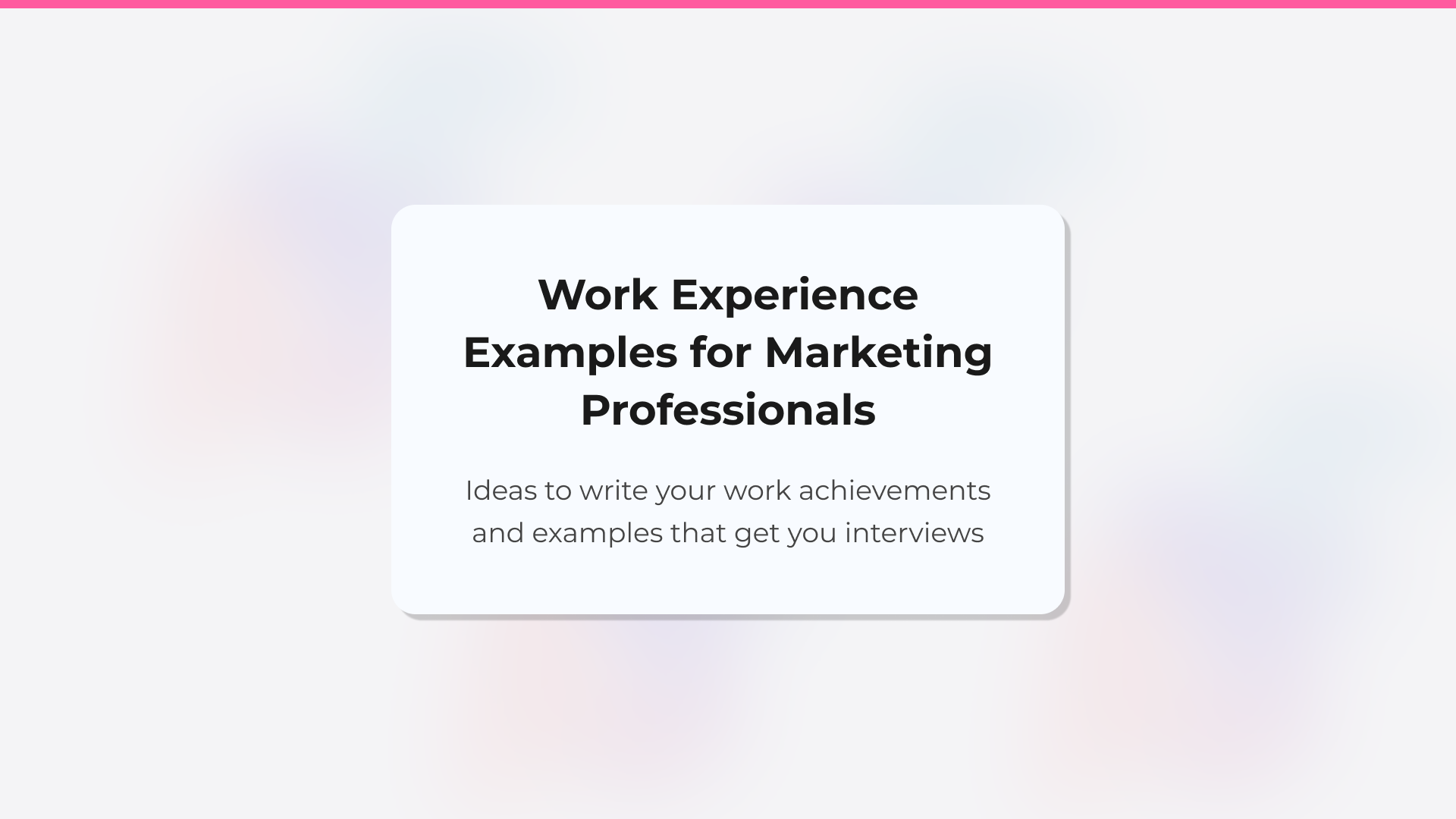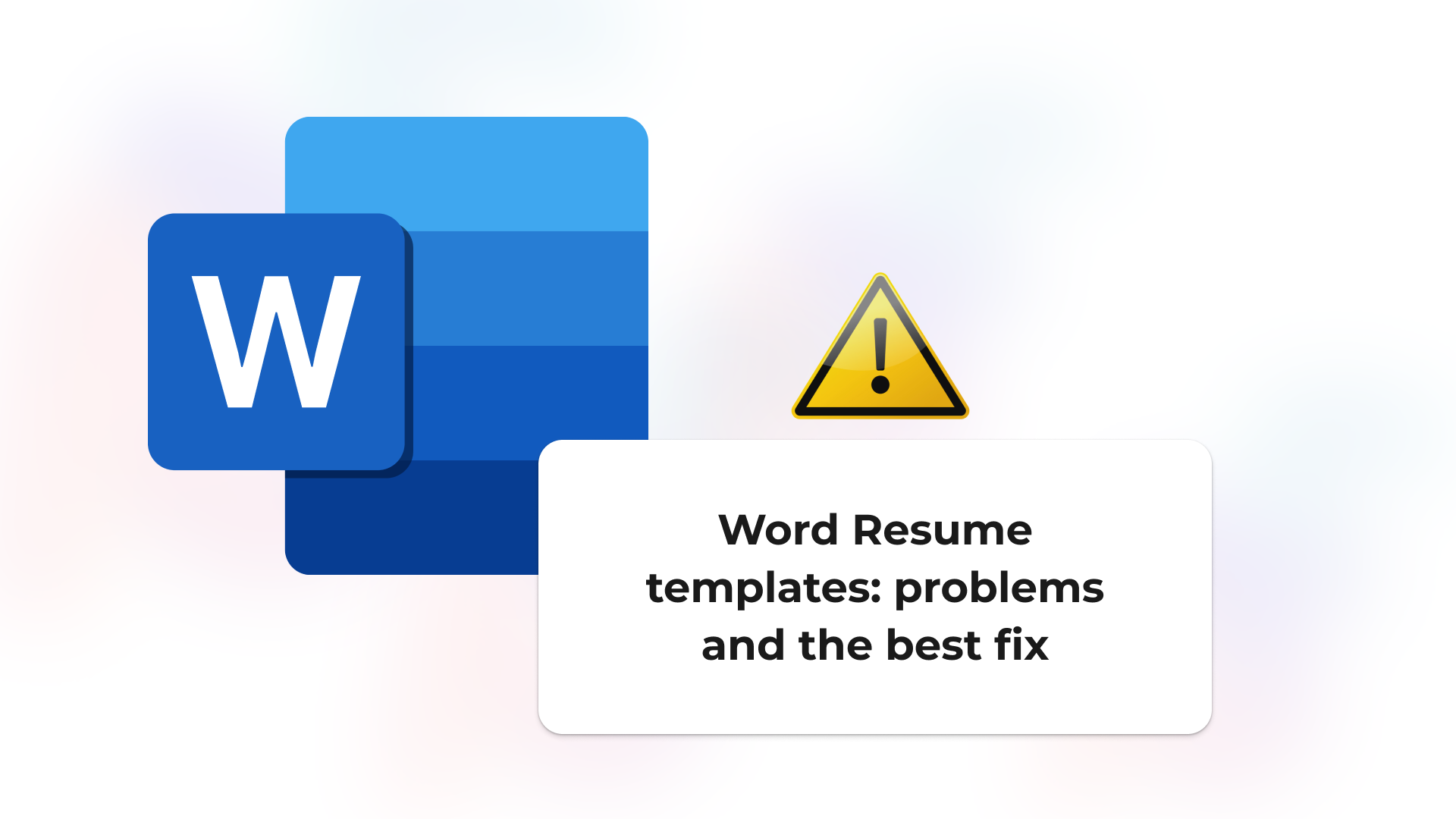
Free Word resume templates: why you shouldn't use them (and the best alternative)
Word is an excellent tool for writing documents, reports, or letters. Everyone knows it, many people have used it since school, and it has Microsoft behind it. For general writing, it's a reliable and widespread solution.
But when it comes to building an effective resume, easy to edit, ATS-friendly, and tailored to the real needs of a job seeker; Word falls short.
Using Word to make your resume seems like a logical choice. The online version is free, it has templates, and they look professional. But a resume isn't just any document: it's a blend of content and design meant to grab attention in seconds and highlight what matters most. It's what opens (or closes) doors to job opportunities.
Once you start, you realize Word just isn’t built for that. It doesn’t help you write better, tailor your resume quickly, or guarantee it passes through an ATS. And editing a template becomes a nightmare the moment you try to tweak anything.
In this article you’ll learn:
- Why creating your resume with a Word template works against you.
- The main problems of using Word for resumes.
- What tools you can add to Word to try and make up for its shortcomings (and why they’re not enough).
- How much it really costs to turn Word into a decent resume tool.
- What alternatives to Word exist for resumes in 2025, and why CandyCV stands out.
Common issues with Word resume templates
If you haven’t started building your resume yet, you might not know what’s coming. And if you’re already in the middle of it, you’re probably dealing with one of these issues:
You don’t know where to start
You know you need a resume, but not how to begin. The blinking cursor stares back: “What do I even include? Education first or work experience? What if I don’t have much experience? What order should I follow?”
Even if you use a Word template, it doesn’t solve the core problem: what to say about yourself, and how to say it well.
And if you're unsure about formatting, here’s how to choose the best resume format.
It’s hard to write about your experience
You know you should highlight 3–4 key achievements, use action verbs, and quantify results. But all you come up with are generic phrases. You don’t know how to talk about yourself without sounding arrogant, or how to translate what you do into language a recruiter understands.
It takes hours (or days) to fix the layout
There are thousands of Word templates, but very few meet modern standards. Some aren’t even ATS-friendly. And the few decent ones fall apart the moment you touch anything.
Want two columns? You have to use a table. Change a heading? The formatting breaks. Change the colors? Good luck with styles. Margins? Move one thing, and everything shifts.
And sure, you’re told tailoring your resume to each job improves your chances. But with this mess, who has the time or energy to make a new version every time?
You don’t know if your resume is any good
You finish and feel relieved, but also unsure. Will this pass ATS filters? Is it easy to read? Does it clearly show the value I bring?
Word corrects spelling, but it doesn’t tell you if your resume is well-structured, sounds generic, or communicates your value. And that’s exactly what you need most.
You don’t know what happens with your data
When you use online templates, browser extensions, or AI assistants, you often have no idea where your information goes. Some tools store what you write, train models with your content, or ask you to accept unclear terms. If you don’t read the fine print, you don’t know what you’ve agreed to.
The real cost of using Word resume templates (and why it’s not worth it)
If you want a strong resume, not just an average one, you’ll soon realize Word isn’t helping much. To make it more than just a template, you’ll end up building a Frankenstein’s monster of plugins, subscriptions, and third-party tools. It might work… but it’ll be expensive, fragile, and still not optimized for resumes.
Let’s break it down.
Word Online (Free)
The most accessible option. It works in your browser and doesn’t require installation. It offers tons of templates, but few are well-designed. And even if you find a decent one, editing it is a nightmare, especially if you stray from the Harvard resume template.
Change a font and the style breaks. Delete a sentence and everything shifts. Word has no smart blocks or semantic fields: it doesn’t know you're writing a job experience or an education section. It sees plain text. Editing colors, columns, or multi-page structures is like playing Jenga blindfolded. Many resume templates are built with tables for column layouts. What seems handy at first quickly becomes an editing nightmare.
And that’s without even getting into ATS compatibility or the other must-haves for a good resume.
Microsoft Editor
This is the first layer of "enhancements" you can try. Microsoft Editor is Word’s built-in spelling and grammar checker. The free version spots basic errors and offers simple style suggestions. But don’t expect miracles: it might catch a missing comma, but not whether your resume communicates professional value.
With the premium version (included in Microsoft 365, starting at $6.99/month), Editor analyzes clarity, tone, and readability. It suggests smoother phrasing and improves overall style. Sounds great, except it has no context for resumes.
It can’t tell the difference between a resume and a school paper. It edits based on language, not what a recruiter needs to read.
Microsoft Copilot (Free version)
Copilot is an AI assistant like ChatGPT. You can ask for ideas, revisions, or rewrites. But it’s not built into Word: you have to copy your text, paste it into the chat, ask for help, then copy the response back. Constant back-and-forth.
Plus, it’s not a resume expert. Unless you give super-specific prompts (and know what to ask), it gives generic suggestions. The exact reason so many resumes sound the same.
Copilot Pro ($20/month + Microsoft 365 subscription)
Copilot Pro is a step up. It’s integrated into Word, helps with writing, and understands document content. It can summarize, rewrite, and adjust tone. Pretty powerful.
But:
- You need Microsoft 365 (from $6.99/month).
- Copilot Pro access costs an extra $20/month.
- And still, it’s not a resume expert.
It doesn’t think like a recruiter. It doesn’t understand ATS rules. It won’t tell you if your resume actually conveys your value. That’s a lot of money for something that isn’t even designed for resumes, especially when there are free alternatives like CandyCV that are.
GPT for Work (Word Extension)
This extension brings ChatGPT into Word. You can select a paragraph and ask it to improve, translate, or rewrite.
It’s super useful, if you know exactly what you need, how to set up an API key, and have experience using AI tools. But if you just want a solid resume without getting technical, it’s not the easiest route.
Also:
- Some plans require your own API key.
- English still gives the best results.
- Even though it seems cheap per token, you need to know how to optimize usage.
So how much does a good resume cost with Word?
Here’s what you’ll need to get something close to a complete setup:
- Microsoft 365 (including Editor): $6.99/month
- Copilot Pro: $20/month
- GPT for Work (optional): from $29 prepaid or based on token packs
And even with all that, you haven’t solved the structural problems of Word for resume creation.
Be careful with sites offering free Word resume templates
The worst part isn’t using Word: it’s downloading resume templates from third-party websites that ask for your data (and sometimes money).
Now you’re stuck with all of Word’s editing problems and you’ve handed over your personal information to a site that may not even meet basic privacy standards. A totally unnecessary mess.
CandyCV: the best alternative to Word resume templates
Imagine ditching broken templates, misaligned formatting, and the constant stress of what to write. Picture a tool designed only for building resumes, so it’s better at it than anything else. That’s CandyCV.
From the start, CandyCV understands what you need:
- If you don’t know where to begin, you can import your LinkedIn profile or upload your old resume. No blank page, it gives you a clear structure and walks you through it.
- When writing your work experience, education, summary, or even contact details, it helps you get the most out of every section.
- Want to quickly tailor your resume to a job? Duplicate it with one click and tweak only what’s needed. The design never breaks. The content adapts to the layout, not the other way around.
- All templates are ATS-compatible. You don’t have to choose between pretty and practical, you get both.
And if you want to go further, you can build your online resume: a link that’s always up to date, easy to share, and turns your resume into a kind of professional website. Perfect if you’re constantly learning or changing roles and don’t want to keep exporting and emailing PDFs.
Plus, CandyCV respects your privacy:
- Your content isn’t used to train AI models.
- It’s never shared with third parties.
- You won’t lose access to your work if you don’t pay.
- It doesn’t just follow data protection laws; it goes beyond, using advanced encryption methods.
 |
 |
Conclusion
Maybe you’re thinking, “Well, Word isn’t perfect, but I can get by with templates and ChatGPT.” And I get it. We’re so used to finding workarounds that we don’t even consider there could be something better.
But Word is built for generic documents, not your gateway into the job market. You can add AI, plugins, extensions… but you’re still fighting against a tool that wasn’t made for this.
A resume isn’t just a piece of writing. It’s about knowing what to say, how to say it, how to tailor it to each job, and making sure it passes automated filters. Most importantly, it’s about showing your value in seconds.
If you’re actively job hunting, what you need is focus, clarity, and flow. Not wasting afternoons fixing margins, colors, or broken layouts. Not spending hours wondering if your resume reflects what your work is worth.
Word won’t help you with that. CandyCV will.
Frequently Asked Questions (FAQ)
Should I use a Word resume template?
No. While Word is great for writing documents, it’s not designed to build resumes. It doesn’t help you structure your experience well, tailor your content to each job, or ensure ATS compatibility. And once you try to edit a template, everything tends to break. You end up wasting time and confidence.
What are the problems with Word resume templates?
They may seem like a quick fix at first, but Word resume templates usually cause more problems than they solve. Many have outdated designs or aren’t ATS-friendly. And the ones that look good often fall apart: change a sentence and the formatting shifts, delete a section and styles disappear. Many use tables, which makes editing even harder. Worst of all, they don’t help you write better or highlight your value; and if you get them from third-party websites, you might be handing over your data without realizing it.
Can I make a good resume with Word?
You can improve it, but only by layering external tools: Microsoft Editor, AI assistants like Copilot, or extensions like GPT for Work. The problem is that this takes time, money, and effort; and even then, it doesn’t turn Word into a resume-specific tool. They’re patches that don’t fix the core issue: Word wasn’t built for this.
What’s the best alternative to Word resume templates?
There are many, but few truly solve the whole problem. CandyCV is one of the few platforms built specifically for resumes that really solves it ethically: it guides you from scratch, adapts content to design, keeps formatting stable, offers real-time feedback, and lets you export or share your resume online professionally without lock-ins or shady tricks.
Why is CandyCV better than Word for making a resume?
Because it’s built for what you need. CandyCV doesn’t drop you into a blank template, it gives you a clear structure, real-time examples, personalized suggestions, and design that stays perfect no matter what. Plus, it’s ATS-friendly, lets you create an online resume that updates itself, and keeps your data safe. No lock-ins, no fine print, no shady tricks.
We're two product builders who care about quality, taste and doing things right. We want you to get that job you want, plain and simple. That's why we are building CandyCV to help you create a great resume and land a job for free. If you give us a try (and feedback!), we'll be forever grateful 😊
Alba Hornero
Co-founder and Product Builder
As CandyCV’s co-founder and a former product lead in HR tech, I’ve built ATS tools, optimized hiring processes, and interviewed hundreds of recruiters. I personally write every post with the intention to provide real, high-impact job search advice that truly helps you land your next role.
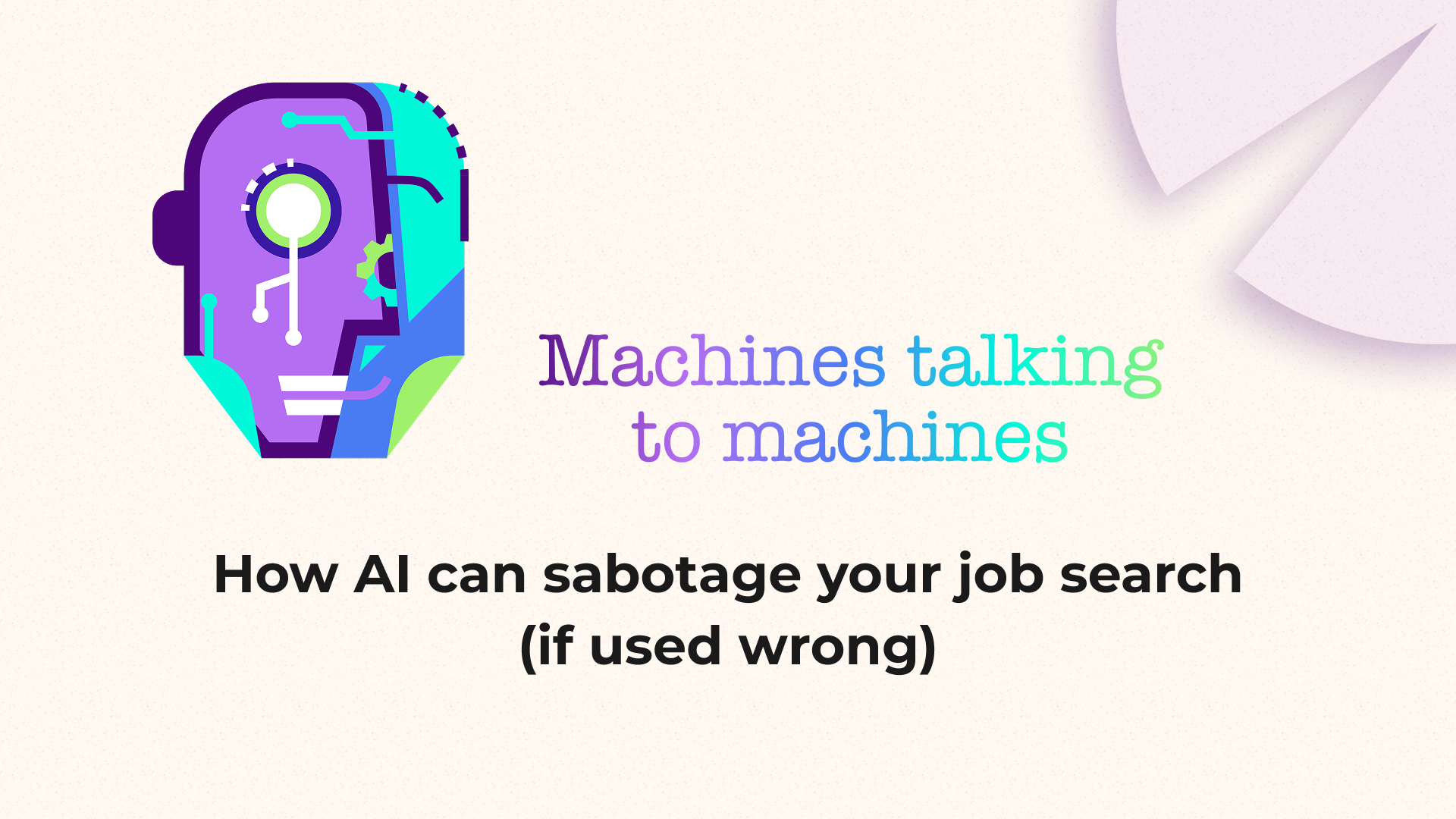
Machines talking to machines: how AI can sabotage your job search (if used wrong)
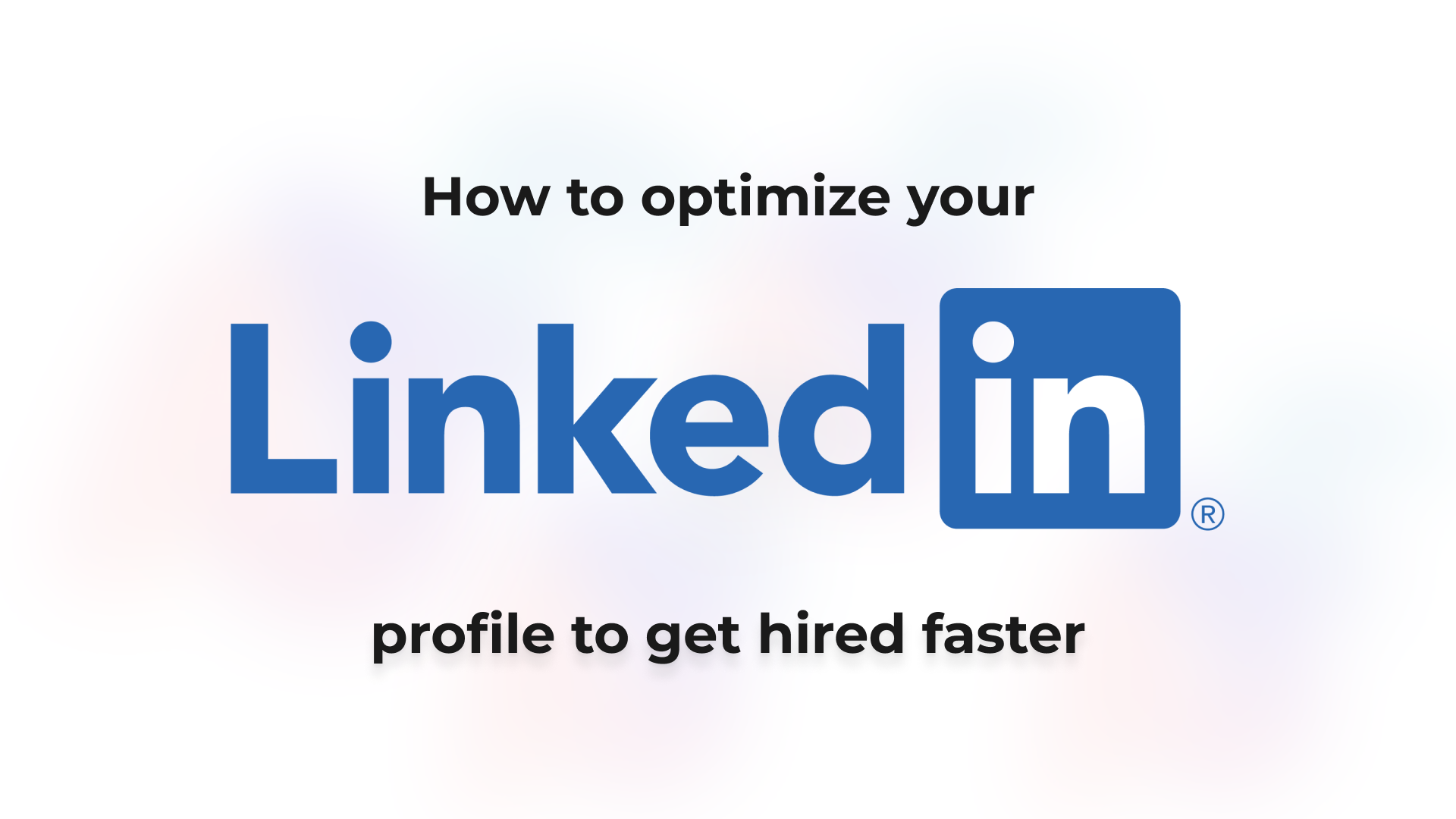
How to optimize your LinkedIn profile in 2025 and find a job faster
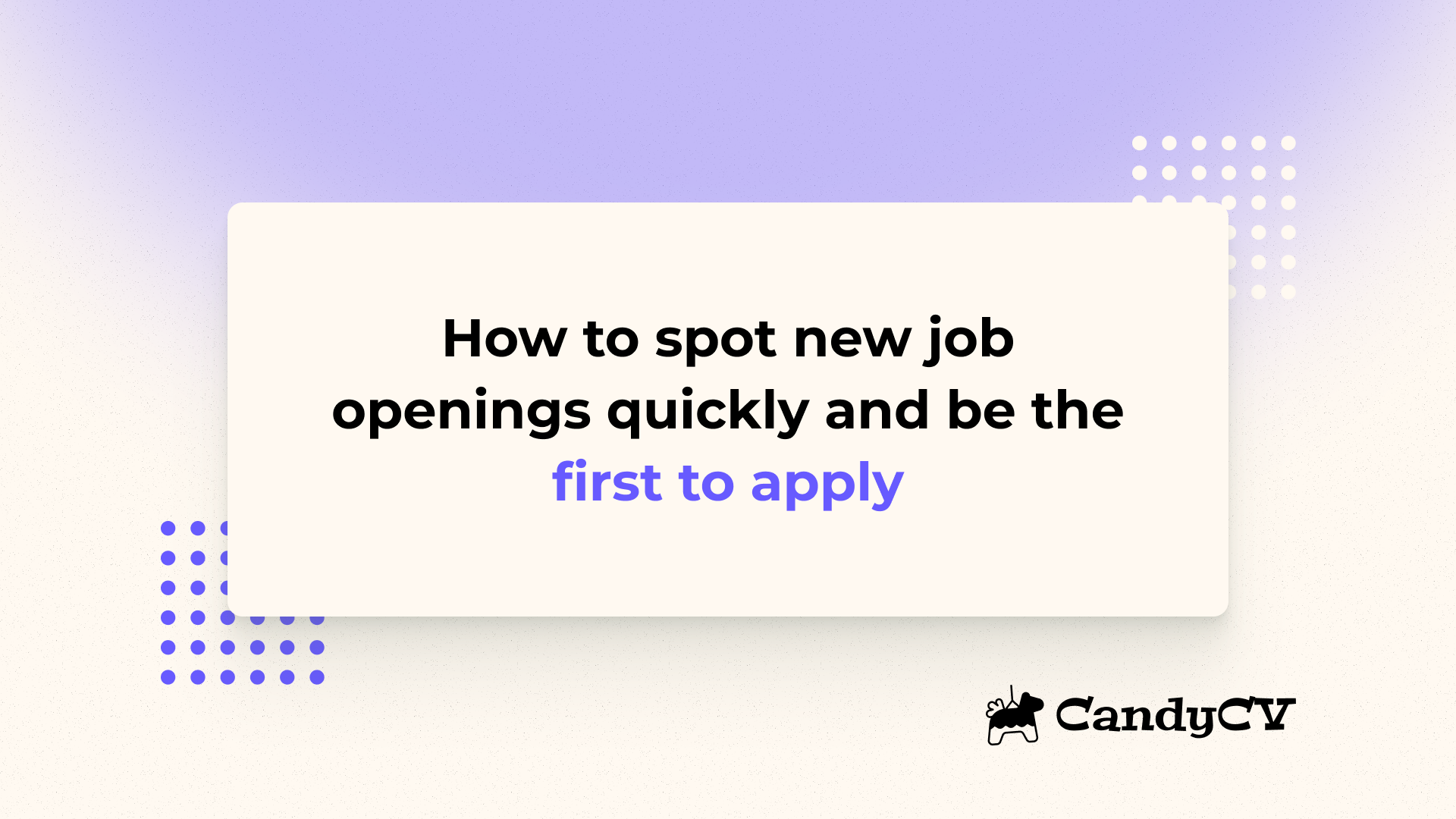
How to spot new job openings quickly and be the first to apply
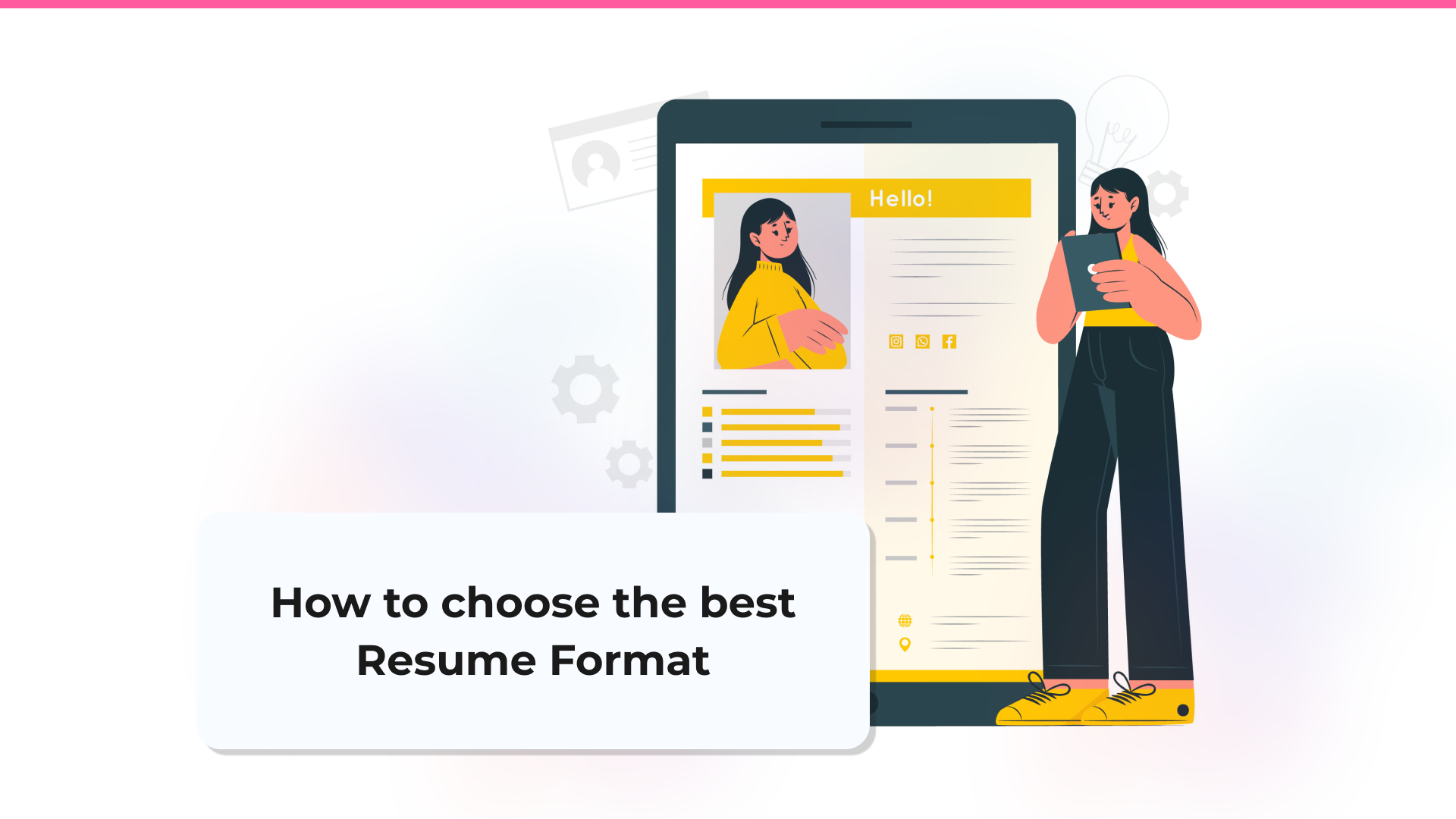
How to choose the best Resume Format for you in 2025: a complete guide
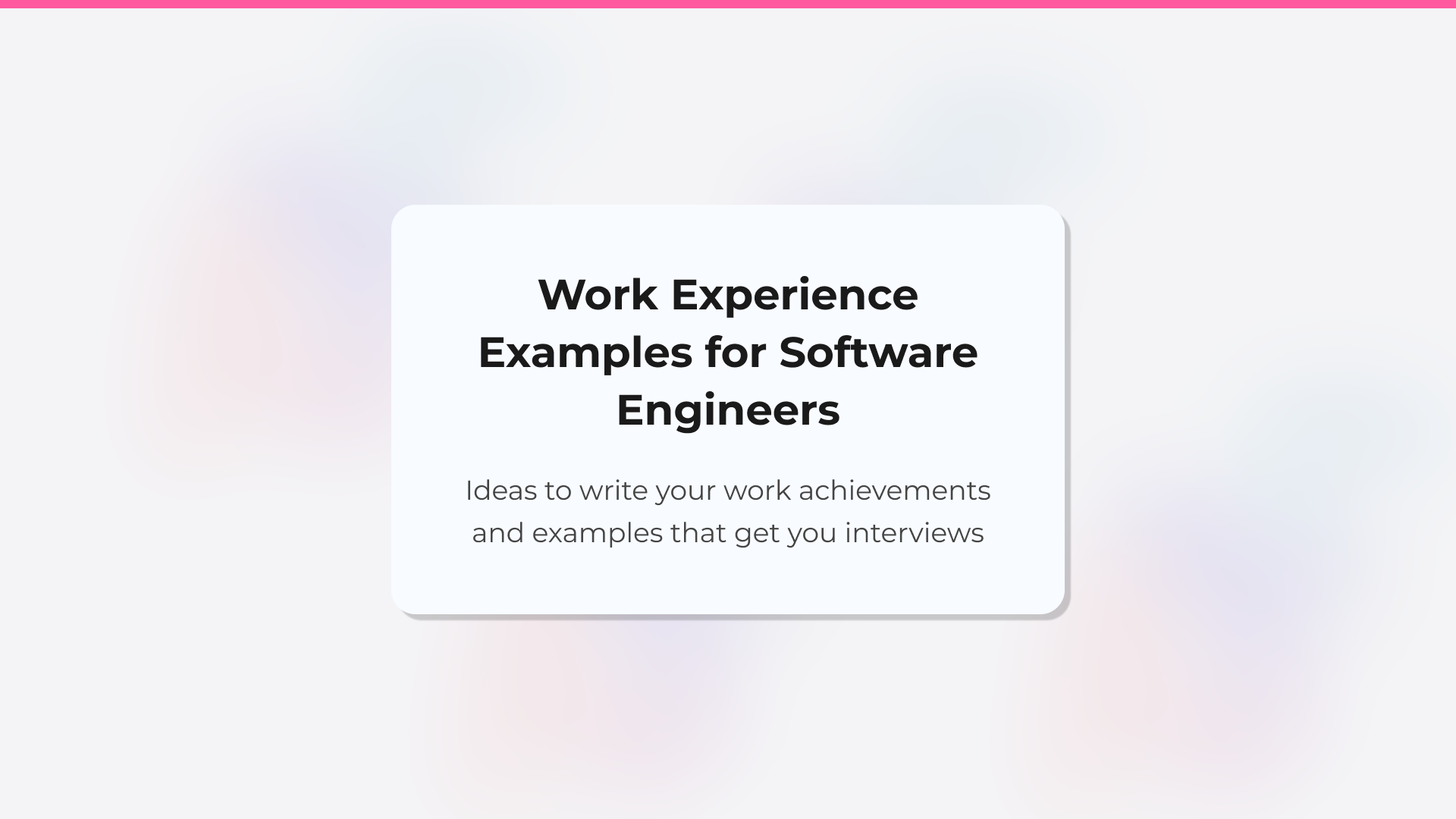
Software engineer resume: work experience and achievements examples
